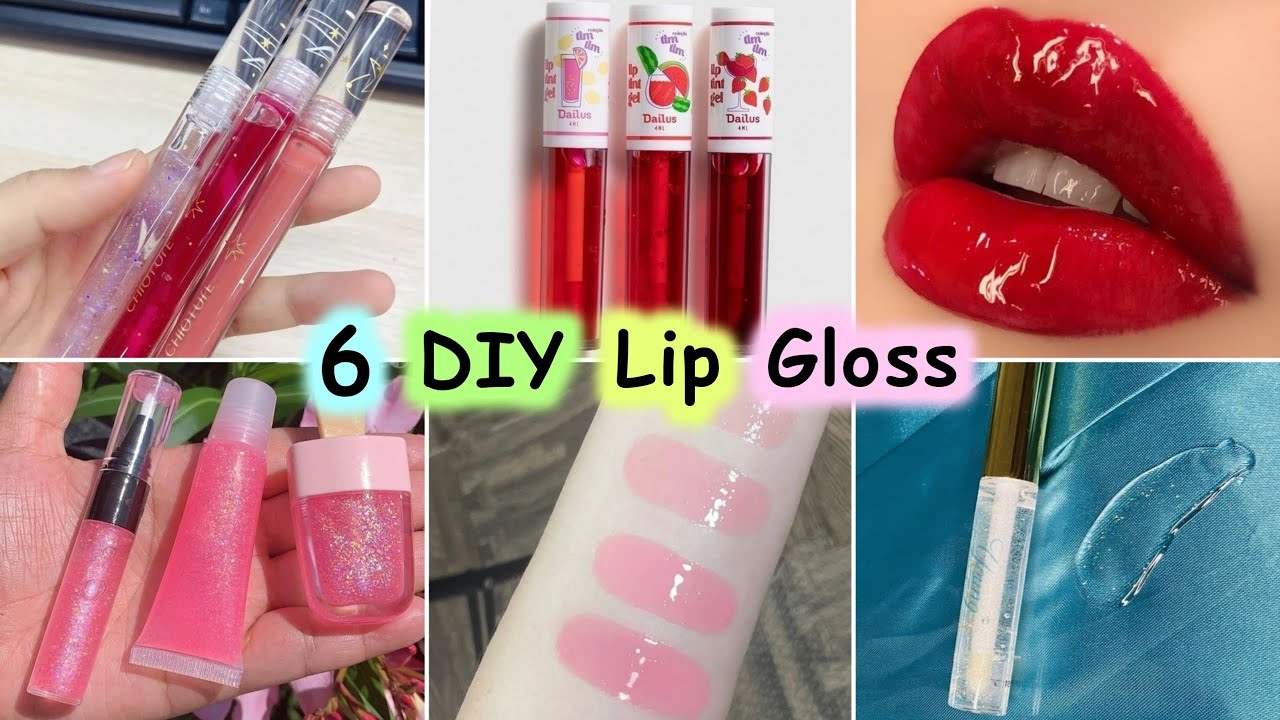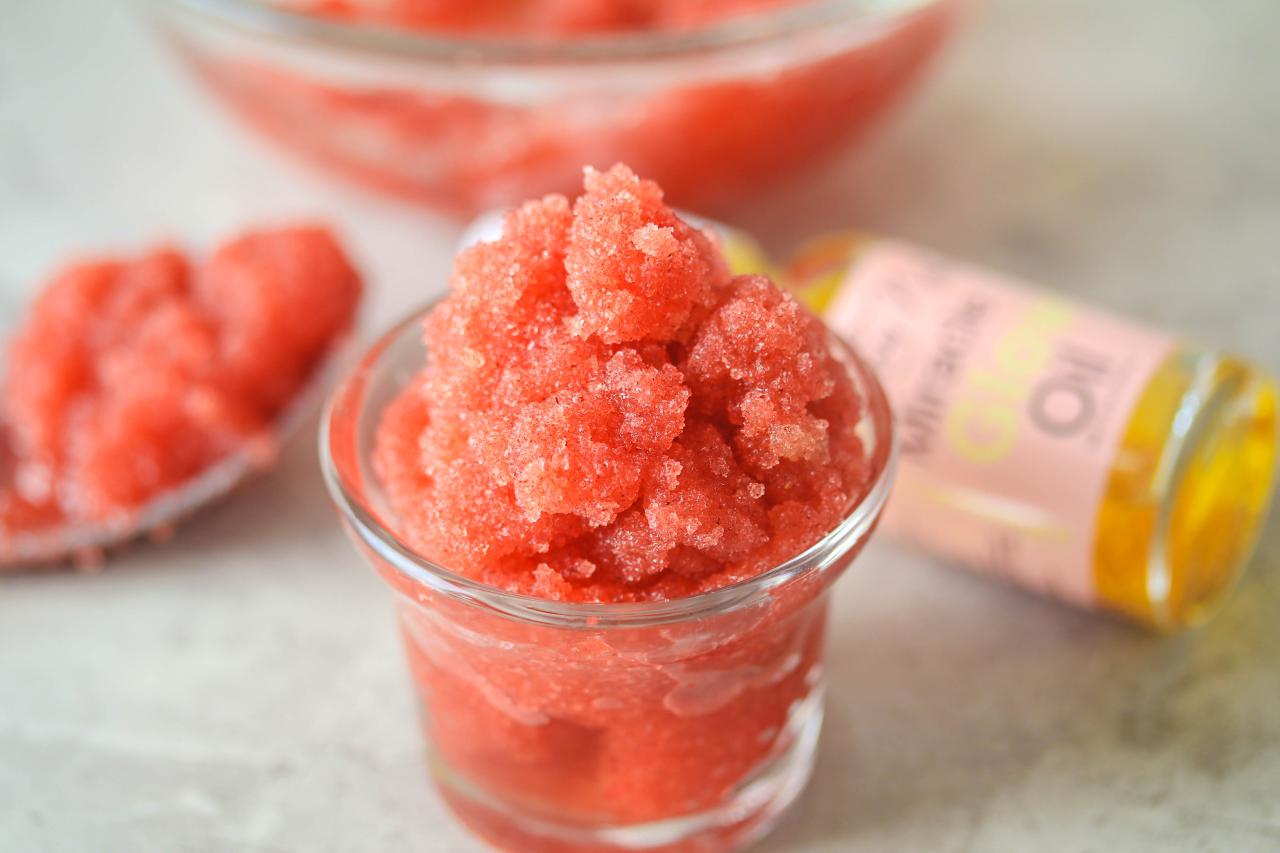DIY lip gloss is a fun and rewarding way to personalize your beauty routine. Making your own lip gloss allows you to control the ingredients, create custom colors and textures, and even experiment with unique scents and effects. This process not only gives you a sense of satisfaction but also allows you to avoid potentially harmful chemicals found in many commercial lip glosses.
From simple clear glosses to shimmering and tinted creations, the possibilities are endless. Whether you’re a seasoned beauty enthusiast or a curious beginner, this guide will provide you with everything you need to know to embark on your DIY lip gloss journey.
Tips for Troubleshooting DIY Lip Gloss

Making your own lip gloss can be a fun and rewarding experience, but sometimes things don’t go as planned. Don’t worry! There are a few common issues that can be easily fixed with a little troubleshooting. This guide will help you identify and resolve common problems encountered while making DIY lip gloss.
Lip Gloss Is Too Thick
If your lip gloss is too thick, it might be difficult to apply smoothly and evenly. This is often caused by using too much wax or a combination of waxes that are too hard.
- Solution: Add a small amount of oil to your lip gloss mixture. This will help to thin it out and make it easier to apply. Start with a few drops and add more as needed.
- Tip: Use a heat gun or hair dryer to gently warm the lip gloss. This will help to soften the wax and make it easier to stir.
Lip Gloss Is Too Thin
If your lip gloss is too thin, it might be runny and difficult to control. This can be caused by using too much oil or a combination of oils that are too liquid.
- Solution: Add a small amount of wax to your lip gloss mixture. This will help to thicken it up and make it more manageable. Start with a small amount and add more as needed.
- Tip: Use a spatula to carefully stir in the wax. This will help to ensure that it is evenly distributed throughout the lip gloss.
Lip Gloss Is Cloudy or Opaque
If your lip gloss is cloudy or opaque, it might be due to air bubbles or improper mixing.
- Solution: Stir the lip gloss mixture slowly and carefully to avoid introducing air bubbles.
- Tip: Use a toothpick or a small wooden skewer to gently remove any air bubbles that may have formed.
Lip Gloss Has Separated
If your lip gloss has separated, it might be due to improper mixing or the use of incompatible ingredients.
- Solution: Reheat the lip gloss mixture gently and stir it well until it is smooth and consistent.
- Tip: Use a heat gun or hair dryer to gently warm the lip gloss. This will help to melt the ingredients and make them easier to combine.
Lip Gloss Is Sticky, Diy lip gloss
If your lip gloss is sticky, it might be due to using too much wax or a combination of waxes that are too sticky.
- Solution: Add a small amount of oil to your lip gloss mixture. This will help to reduce the stickiness. Start with a few drops and add more as needed.
- Tip: Use a spatula to carefully stir in the oil. This will help to ensure that it is evenly distributed throughout the lip gloss.
Lip Gloss Is Not Setting Properly
If your lip gloss is not setting properly, it might be due to using too much oil or a combination of oils that are too liquid.
- Solution: Add a small amount of wax to your lip gloss mixture. This will help to thicken it up and make it more manageable. Start with a small amount and add more as needed.
- Tip: Use a spatula to carefully stir in the wax. This will help to ensure that it is evenly distributed throughout the lip gloss.
Lip Gloss Is Cracking
If your lip gloss is cracking, it might be due to using too much wax or a combination of waxes that are too hard.
- Solution: Add a small amount of oil to your lip gloss mixture. This will help to soften the wax and make it less likely to crack. Start with a few drops and add more as needed.
- Tip: Use a spatula to carefully stir in the oil. This will help to ensure that it is evenly distributed throughout the lip gloss.
Lip Gloss Is Not Pigmented Enough
If your lip gloss is not pigmented enough, it might be due to using too little pigment or a pigment that is not strong enough.
- Solution: Add more pigment to your lip gloss mixture. Start with a small amount and add more as needed.
- Tip: Use a spatula to carefully stir in the pigment. This will help to ensure that it is evenly distributed throughout the lip gloss.
Lip Gloss Is Not Smooth
If your lip gloss is not smooth, it might be due to improper mixing or the use of incompatible ingredients.
- Solution: Reheat the lip gloss mixture gently and stir it well until it is smooth and consistent.
- Tip: Use a heat gun or hair dryer to gently warm the lip gloss. This will help to melt the ingredients and make them easier to combine.
Conclusive Thoughts
With a little creativity and the right ingredients, you can easily create your own custom lip gloss that’s both beautiful and beneficial. Experiment with different recipes, colors, and textures to find your perfect pout. So, gather your supplies, get creative, and enjoy the rewarding experience of making your own lip gloss!
DIY lip gloss is a fun and affordable way to personalize your beauty routine. If you’re looking for a unique holiday craft project, why not try making a pallet Christmas tree to display your homemade lip glosses? The rustic charm of the pallet will complement the vibrant colors of your lip glosses, creating a festive and stylish display.

